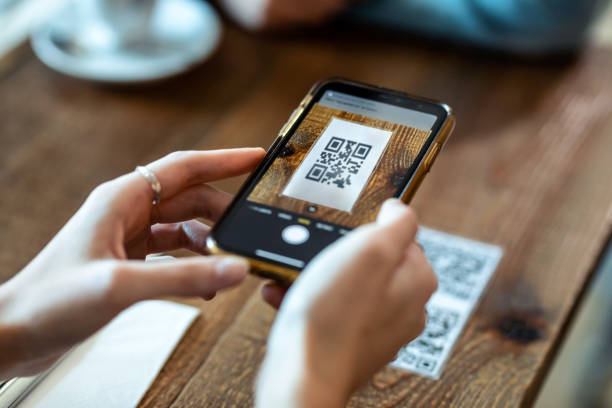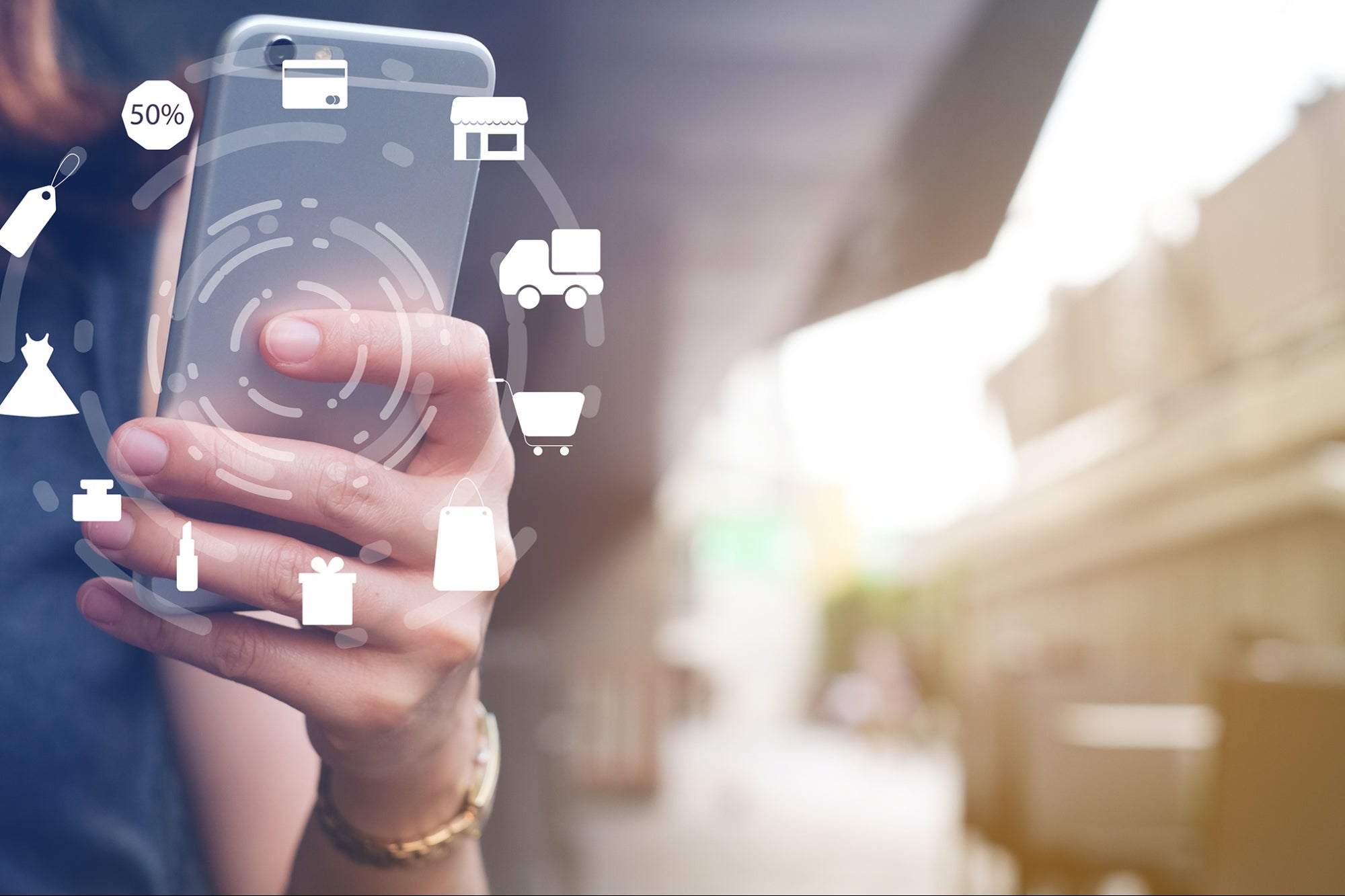What is a QR Code? How to digitize and how to make your own
QR codes are now familiar.
Everywhere you go, you see black-and-white square matrix barcodes printed on building entrances, printed materials, and product packaging. You even see them in commercials, TV shows and, on some notable occasions, lighting up the sky in a spectacular drone show.
You may know that scanning a QR code with your mobile device takes you to a website, file, or menu. But what are QR codes really? How do they work? How are they made? How does your device recognize them?
Let's break this down for you.
What is a QR Code?The "QR" in the QR code stands for "Quick Response". It is a two-dimensional matrix barcode that can be read and scanned with compatible devices such as a smartphone camera or an app.
With an online QR code generator, you can create readable QR codes in both vertical and horizontal dimensions. QR codes can store various data and information, including a link to an online store, an influencer's social media sites, and files such as photos, videos, music, official documents, etc. /p>
QR codes contain more data than a barcode. A barcode consists of a series of characters, numbers, and symbols, while a QR code can store up to 406 bytes of information. QR codes are a convenient and highly effective tool, bridging the gap between the physical and digital worlds.
How do QR codes work?Each black and white square in a QR code represents "one bit", encoding different characters in the text. QR codes use three large squares for alignment so you can scan them in any direction. The other small squares help a QR code scanner read the code.
QR codes have a major advantage over traditional barcodes because they are two-dimensional and only require a QR code scanner (most of which are free) that users can install on their smartphone.
A barcode contains machine-readable information, is one-dimensional, and contains information horizontally. On the other hand, QR codes can be decoded in different directions, which means they can encode more than a hundred times more data.
Why were QR codes created?A Denso Wave engineer named Masahiro Hara invented QR codes in 1994. Since every car component has a unique size, function, and fit, Masahiro created QR codes to eliminate manual labor from a mechanic and avoid mistakes.
Hara and his team were tasked with creating a QR code that people could use to track a car and its parts during production. They didn't expect people to use QR codes outside of the automotive industry when they designed it.
“At the time, I felt like I had developed something great and I expected it to be widely used in the industry in the future. But it was widely used by general users , which I didn't expect. It was used as payment. It was completely unexpected.“
- Masahiro Hara
Also, QR codes were supposed to replace UPC barcodes. QR codes have replaced UPC barcodes as they are much better to use. A QR code can display data even when scanned in different dimensions. It also stores more information than UPC barcodes.
What are the different types of QR codes?There are two types of QR codes: static and dynamic. Let's take a look at each type.
Static QR codeThe generation of a static QR code is free and the number of scans provided is unlimited. However, static QR codes are only suitable for one-time use as the user cannot modify the embedded data.
After generating the static QR code, users cannot change the information in the code. They also cannot track the number of scans or the device and location of the scanner.
Dynamic QR codeDynamic QR code allows users to track, edit and update embedded data. This saves a lot of time, effort and money.
With a dynamic QR, users can modify the data or information it contains even if the code has already been published. You can also track QR performance. Dynamic QRs give you access to real-time scan monitoring to track data such as scan counts, scan locations, scan times, and devices used.
A dynamic QR can be password protected, scan email notifications and integrate with analytics...

QR codes are now familiar.
Everywhere you go, you see black-and-white square matrix barcodes printed on building entrances, printed materials, and product packaging. You even see them in commercials, TV shows and, on some notable occasions, lighting up the sky in a spectacular drone show.
You may know that scanning a QR code with your mobile device takes you to a website, file, or menu. But what are QR codes really? How do they work? How are they made? How does your device recognize them?
Let's break this down for you.
What is a QR Code?The "QR" in the QR code stands for "Quick Response". It is a two-dimensional matrix barcode that can be read and scanned with compatible devices such as a smartphone camera or an app.
With an online QR code generator, you can create readable QR codes in both vertical and horizontal dimensions. QR codes can store various data and information, including a link to an online store, an influencer's social media sites, and files such as photos, videos, music, official documents, etc. /p>
QR codes contain more data than a barcode. A barcode consists of a series of characters, numbers, and symbols, while a QR code can store up to 406 bytes of information. QR codes are a convenient and highly effective tool, bridging the gap between the physical and digital worlds.
How do QR codes work?Each black and white square in a QR code represents "one bit", encoding different characters in the text. QR codes use three large squares for alignment so you can scan them in any direction. The other small squares help a QR code scanner read the code.
QR codes have a major advantage over traditional barcodes because they are two-dimensional and only require a QR code scanner (most of which are free) that users can install on their smartphone.
A barcode contains machine-readable information, is one-dimensional, and contains information horizontally. On the other hand, QR codes can be decoded in different directions, which means they can encode more than a hundred times more data.
Why were QR codes created?A Denso Wave engineer named Masahiro Hara invented QR codes in 1994. Since every car component has a unique size, function, and fit, Masahiro created QR codes to eliminate manual labor from a mechanic and avoid mistakes.
Hara and his team were tasked with creating a QR code that people could use to track a car and its parts during production. They didn't expect people to use QR codes outside of the automotive industry when they designed it.
“At the time, I felt like I had developed something great and I expected it to be widely used in the industry in the future. But it was widely used by general users , which I didn't expect. It was used as payment. It was completely unexpected.“
- Masahiro Hara
Also, QR codes were supposed to replace UPC barcodes. QR codes have replaced UPC barcodes as they are much better to use. A QR code can display data even when scanned in different dimensions. It also stores more information than UPC barcodes.
What are the different types of QR codes?There are two types of QR codes: static and dynamic. Let's take a look at each type.
Static QR codeThe generation of a static QR code is free and the number of scans provided is unlimited. However, static QR codes are only suitable for one-time use as the user cannot modify the embedded data.
After generating the static QR code, users cannot change the information in the code. They also cannot track the number of scans or the device and location of the scanner.
Dynamic QR codeDynamic QR code allows users to track, edit and update embedded data. This saves a lot of time, effort and money.
With a dynamic QR, users can modify the data or information it contains even if the code has already been published. You can also track QR performance. Dynamic QRs give you access to real-time scan monitoring to track data such as scan counts, scan locations, scan times, and devices used.
A dynamic QR can be password protected, scan email notifications and integrate with analytics...
What's Your Reaction?






















